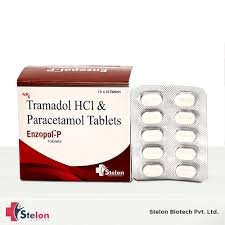What is tramadol?
tramadol
Get Now
Tramadol is a prescription medication used to treat moderate to moderately severe pain. It is classified as an opioid analgesic, though its mechanism of action is somewhat unique. Tramadol works by binding to the brain’s opioid receptors and also inhibits the reuptake of neurotransmitters such as serotonin and norepinephrine, which helps alleviate pain.
Common Uses
Tramadol is typically prescribed for conditions such as:
- Post-operative pain
- Chronic pain conditions (e.g., arthritis, fibromyalgia)
- Injury-related pain
It is often chosen for its dual action, providing effective pain relief while having a lower risk of addiction compared to stronger opioids.
Dosage and Administration
Tramadol is available in various forms, including immediate-release and extended-release tablets. The dosage depends on the individual’s medical condition, pain severity, and previous response to treatment. It’s essential to follow the prescribed dosage to minimize the risk of side effects and dependency.
Potential Side Effects
While tramadol can be effective, it is not without risks. Common side effects include:
- Nausea and vomiting
- Dizziness and drowsiness
- Constipation
- Headache
More severe side effects can occur, such as seizures, particularly in individuals with a history of seizures or those taking certain medications. Respiratory depression is another serious risk, especially when combined with other central nervous system depressants.
Risks of Dependency and Abuse
Though tramadol is considered less addictive than other opioids, it still carries a risk of dependency and abuse. Misuse can lead to serious complications, including overdose. Patients are advise to use tramadol only as directed and to communicate openly with their healthcare provider about any history of substance use disorder.
Drug Interactions
Tramadol can interact with a variety of medications, which may increase the risk of adverse effects. Notable interactions include:
- Other CNS depressants (e.g., benzodiazepines, alcohol)
- Antidepressants
- Certain antibiotics and antifungals
It’s crucial for individuals to inform their healthcare providers about all medications they are taking to avoid harmful interactions.
Alternatives to Tramadol
For those concerned about the risks associated with tramadol, there are several alternatives for pain management:
- Non-opioid analgesics: Medications like acetaminophen or nonsteroidal anti-inflammatory drugs (NSAIDs) can be effective for mild to moderate pain.
- Physical therapy: Engaging in physical therapy can help manage pain through targeted exercises and techniques.
- Alternative therapies: Acupuncture, massage, and mindfulness practices may also provide relief for some individuals.
- Other prescription options: Depending on the nature of the pain, other classes of medications, such as topical analgesics, may be consider.
Conclusion
Tramadol can be an effective option for managing pain, but it’s essential to weigh the benefits against potential risks. Open communication with healthcare providers and adherence to prescribed guidelines are crucial in ensuring safe use.



